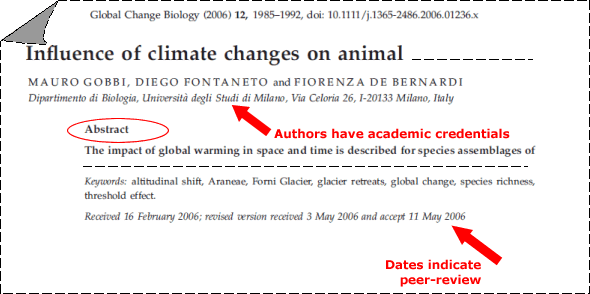
Scholarly sources (also referred to as academic, peer-reviewed, or refereed sources) are written by experts in a particular field and serve to keep others interested in that field up to date on the most recent research, findings, and news. These resources will provide the most substantial information for your research and papers.
When a source has been peer-reviewed, it has undergone the review and scrutiny of a review board of colleagues in the author’s field. They evaluate this source as part of the body of research for a particular discipline and make recommendations regarding its publication in a journal, revisions prior to publication, or, in some cases, reject its publication.
Scholarly sources’ authority and credibility improve the quality of your own paper or research project.
The following characteristics can help you differentiate scholarly sources from those that are not. Be sure to look at the criteria in each category when making your determination, rather than basing your decision on only one piece of information.
Each resource type below will also have unique criteria that can be applied to it to determine if it is scholarly.
Step 1: Source
The article is most likely scholarly if:
Move to Step 2: Authors
Step 2: Authors
The source is most likely scholarly if:
Move to Step 3: Content
Step 3: Content
The article is most likely scholarly if:
If the article meets the criteria in Steps 1-3 it is most likely scholarly.
Articles in scholarly journals may also be called research journals, peer reviewed journals, or refereed journals. These types of articles share many common features, including:
This infographic is part of the Illinois Library's Determine if a source is scholarly.
"Is my source scholarly" by Illinois Library https://www.library.illinois.edu/ugl/howdoi/scholarly/

Research articles in many disciplines are organized into standard sections. Although these sections may vary by discipline, common sections include:
It's not hard to spot these sections; just look for bold headings in the article, as shown in these illustrations:

